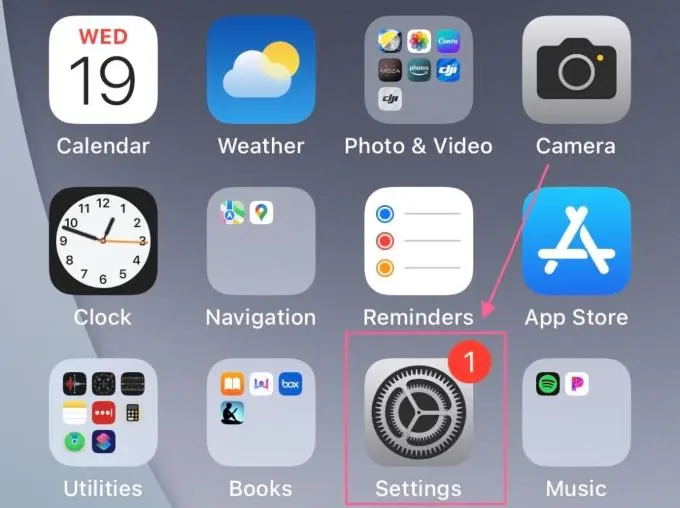For Mac administrators and users, passwords remain a vital and widely utilized method for safeguarding data and privacy. However, for a password to be effective, its security is paramount. Should you ever forget your password or suspect it has been compromised, it’s crucial to reset it without delay. This article will guide you through various strategies for resetting your macOS password.
JumpCloud users are advised to consult our support article for an easy and secure way to reset passwords using the JumpCloud Mac App.
Password Reset: The Decision Is Yours
Numerous strategies exist for resetting your Mac password, with the viability of each method hinging on your level of access. This article delves into several approaches:
- Reset using your Apple ID
- Use another (admin) account
- Reset using a recovery key
- Use the Recovery Mode
1. Reset Mac Password Using Your Apple ID
If your Mac user or admin account is linked to your Apple ID, you can easily reset your password using your Apple ID. Simply follow the instructions below:
- Restart your device.
- Click the question mark icon next to the password field. If you do not see a question mark, hold down the power button until your device shuts down. Afterwards, press the power button to restart your Macbook.
- You will see an arrow icon (Figure 1) with an instruction: “if you forgot your password, you can… Restart and show password reset options.” Click on the arrow. The system will automatically restart for you.
- Your device will reboot into Recovery Assistant. Sign in with your Apple ID and password.
- Afterwards, a new page will appear asking you to provide your new Mac password and a password hint (Figure 2). Enter the necessary details, click Next and follow the instructions.

Figure 1

Figure 2
2. Reset Your Mac Password Using Another Admin Account
If you possess an alternate administrator account and recall its password, you can utilize it to reset the password for either your user or admin account.
- First, log in to the alternate administrator account.
- Open System Preferences and select Users & Groups.
- Click the lock icon in the bottom left corner, provide the administrator password, and click Unlock.
- In the left-hand window, select the account whose password you want to reset (Figure 3).
- Then, click on Reset Password… on the right side of the pane. A new screen will pop up where you can provide a new password and a password hint (Figure 4).
- Lastly, click on Change Password.
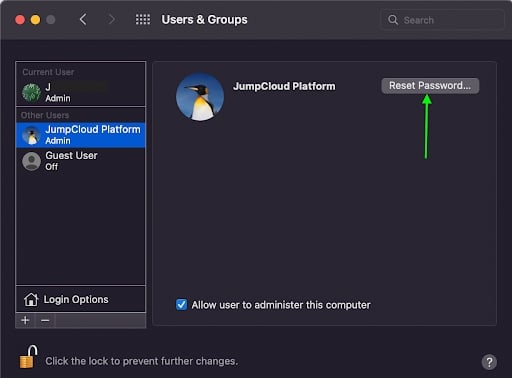
Figure 3
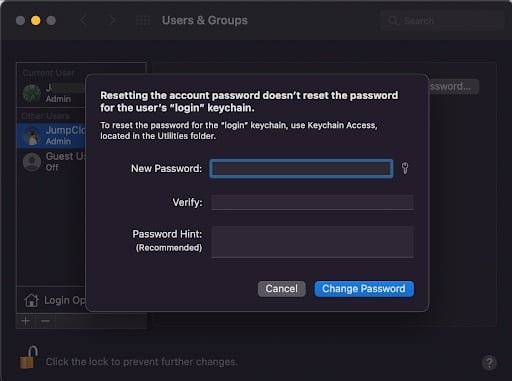
Figure 4
3. Reset Your Password Using a Recovery Key
Should full disk encryption be activated (as recommended), and if a recovery key was generated during the FileVault setup, this key can be utilized to reset your macOS password.
- Restart your device.
- Click the question mark icon next to the password field. If you do not see a question mark, hold down the power button until your device shuts down. Afterwards, press the power button to restart your Macbook.
- You will see an arrow with an instruction: “reset it using your recovery key.” Click on the arrow. Enter the recovery key and click Next.
- Afterwards, follow the instructions to reset your Mac password.
4. Resetting Your Mac Password with Password Assistant
Should the initial three strategies fail, Apple offers an alternative approach. This involves entering recovery mode to reset your password. Initially, ascertain whether your MacBook operates on Apple silicon or an Intel processor.
- Start up from macOS Recovery.
For Apple silicon: Turn on or restart your Macbook and hold down the power button until you see the startup options’ window. Select the icon tagged Options and click Continue (Figure 5).
For Intel processor: Turn on or restart your Macbook and hold down the Command (⌘) and R buttons until the Apple logo appears.
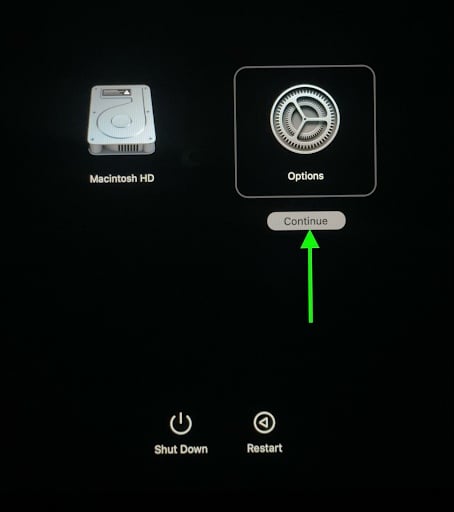
Figure 5
- Now at the Utilities window
Under the Utilities menu bar item, choose Terminal (Figure 6).
- In the Terminal window that opens, type resetpassword and press the Return button to access the Reset Password assistant (Figure 7). If you are requested to select an admin user whose password you know, click on “Forgot all passwords?”.
- You are now at the Reset Password window. Here, click on Deactivate Mac, then, click Deactivate to confirm.
- If you see an Activation Lock window, enter your Apple ID details and click Next.
- At the Reset Password window, provide your new password and click Next. If you see multiple user accounts, click the Set Password option next to each account. Then, enter the new password for each account.
- Once you are done, click Exit. Choose the Apple menu, restart and login to your Macbook using your new password.
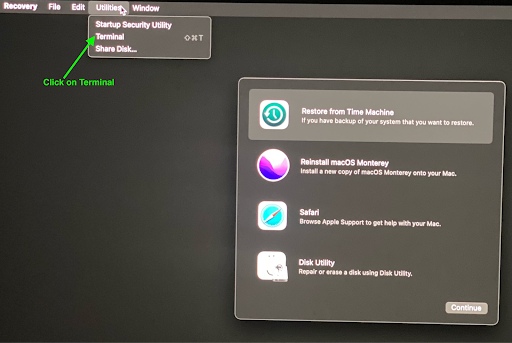
Figure 6
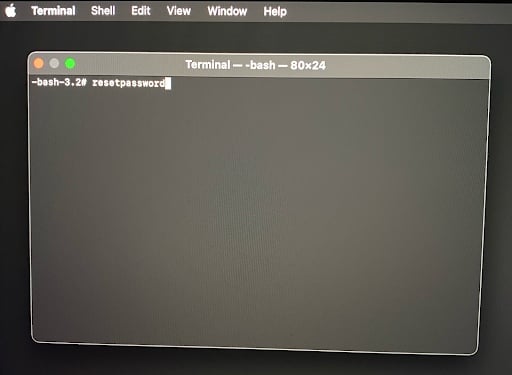
Figure 7
Wrap Up
You now know four distinct methods to reset your MacBook password. Regularly updating and securing your password is crucial for protecting your data and privacy. Furthermore, it significantly simplifies the management of your macOS.


